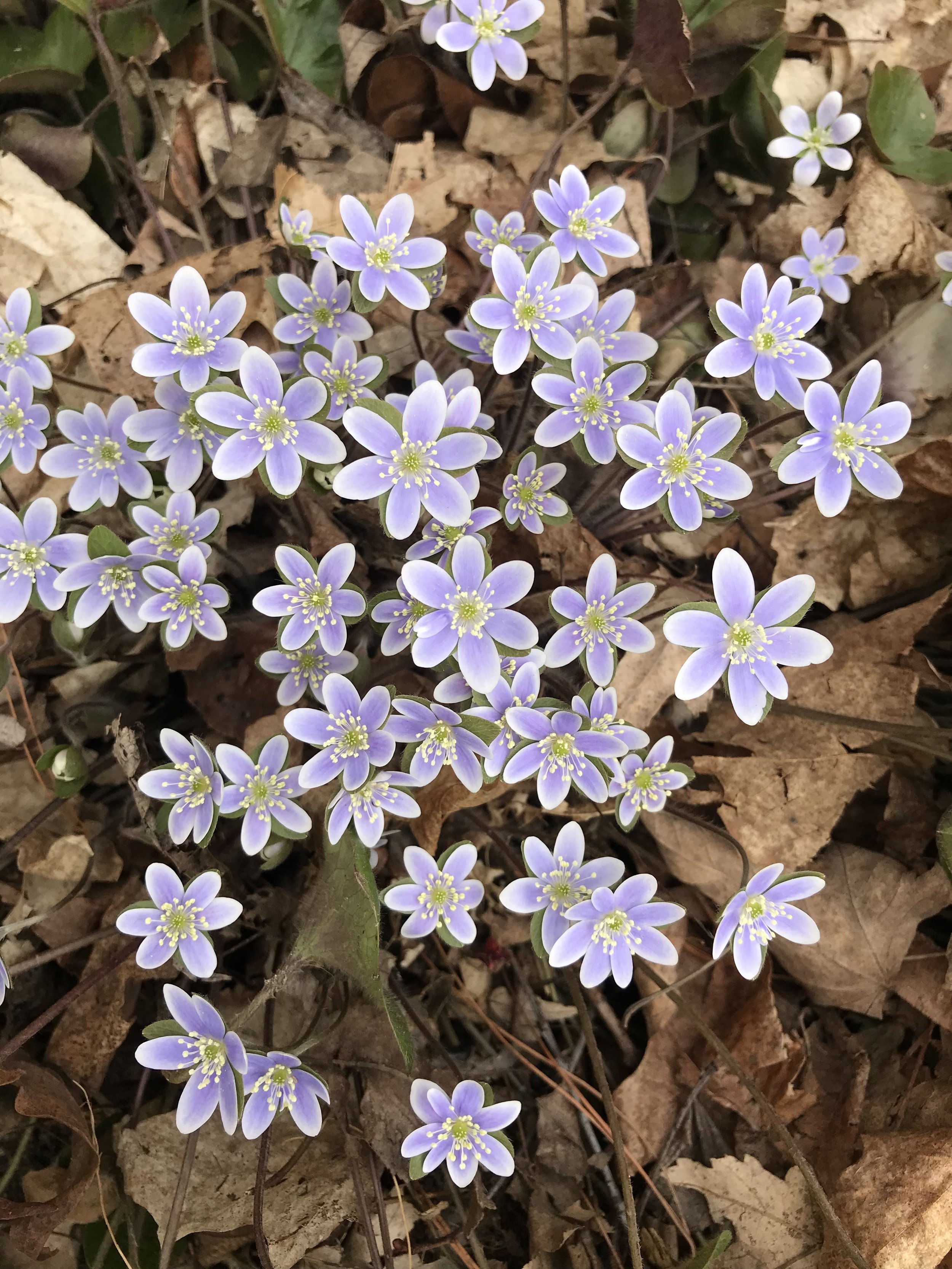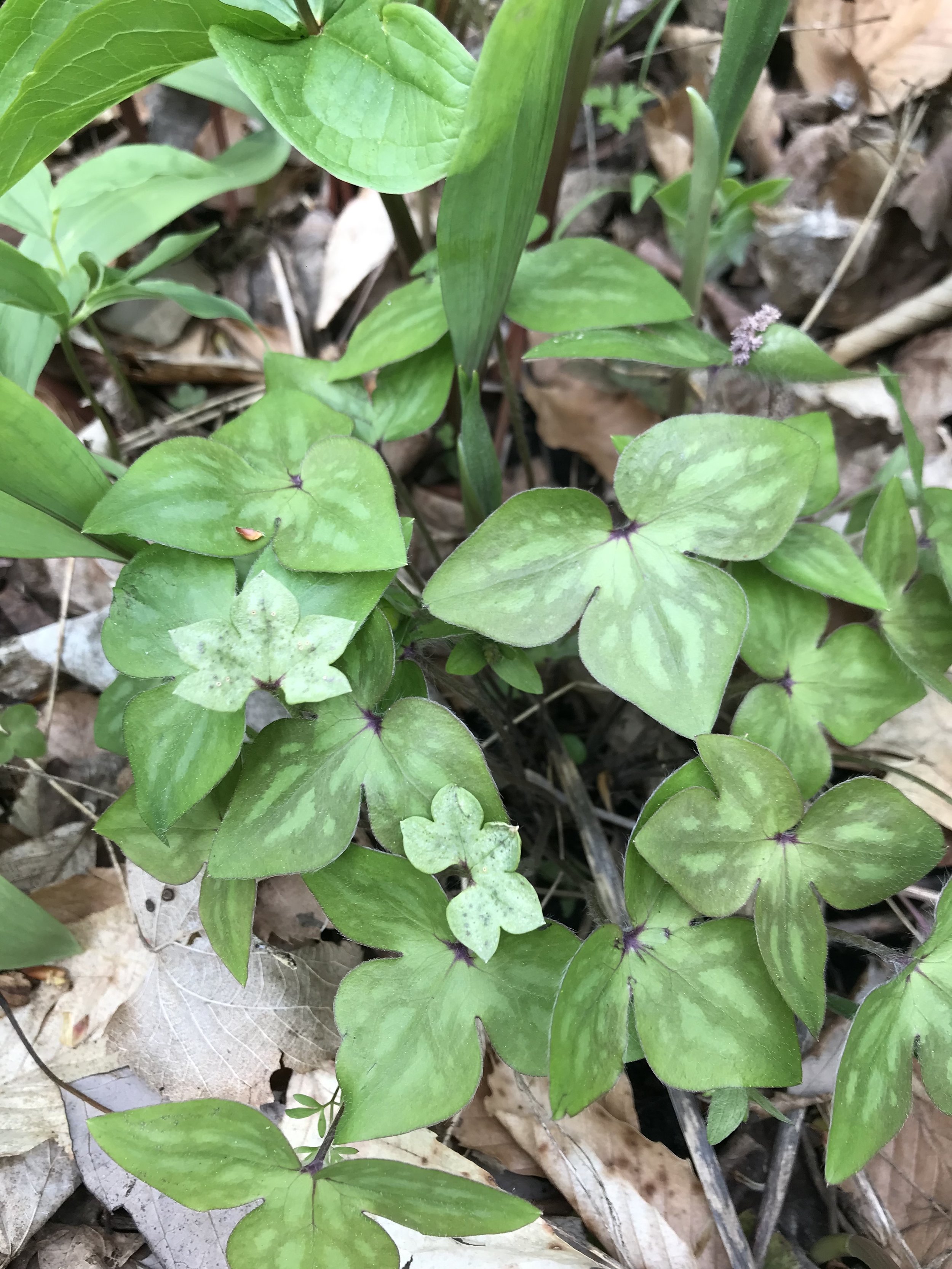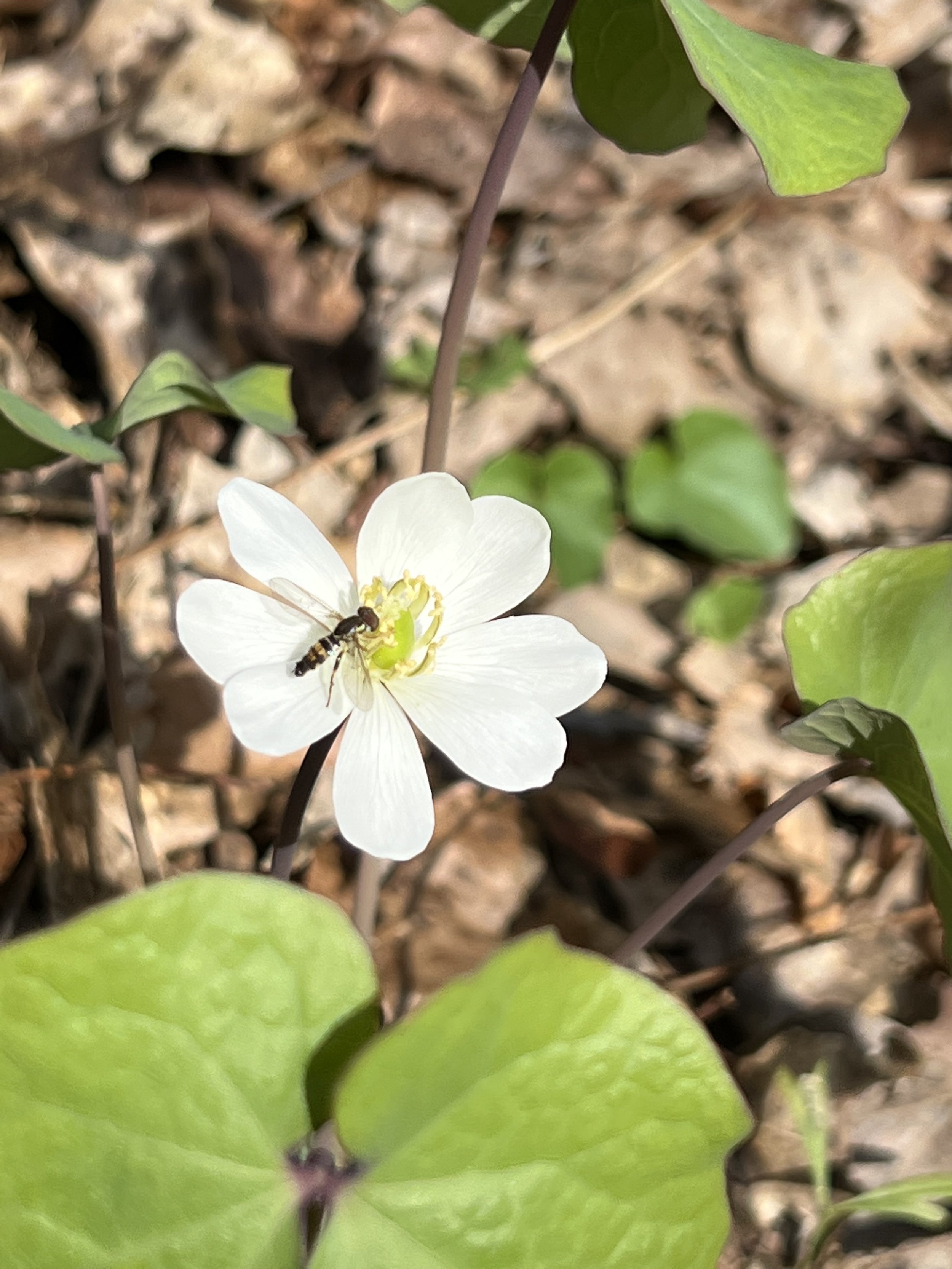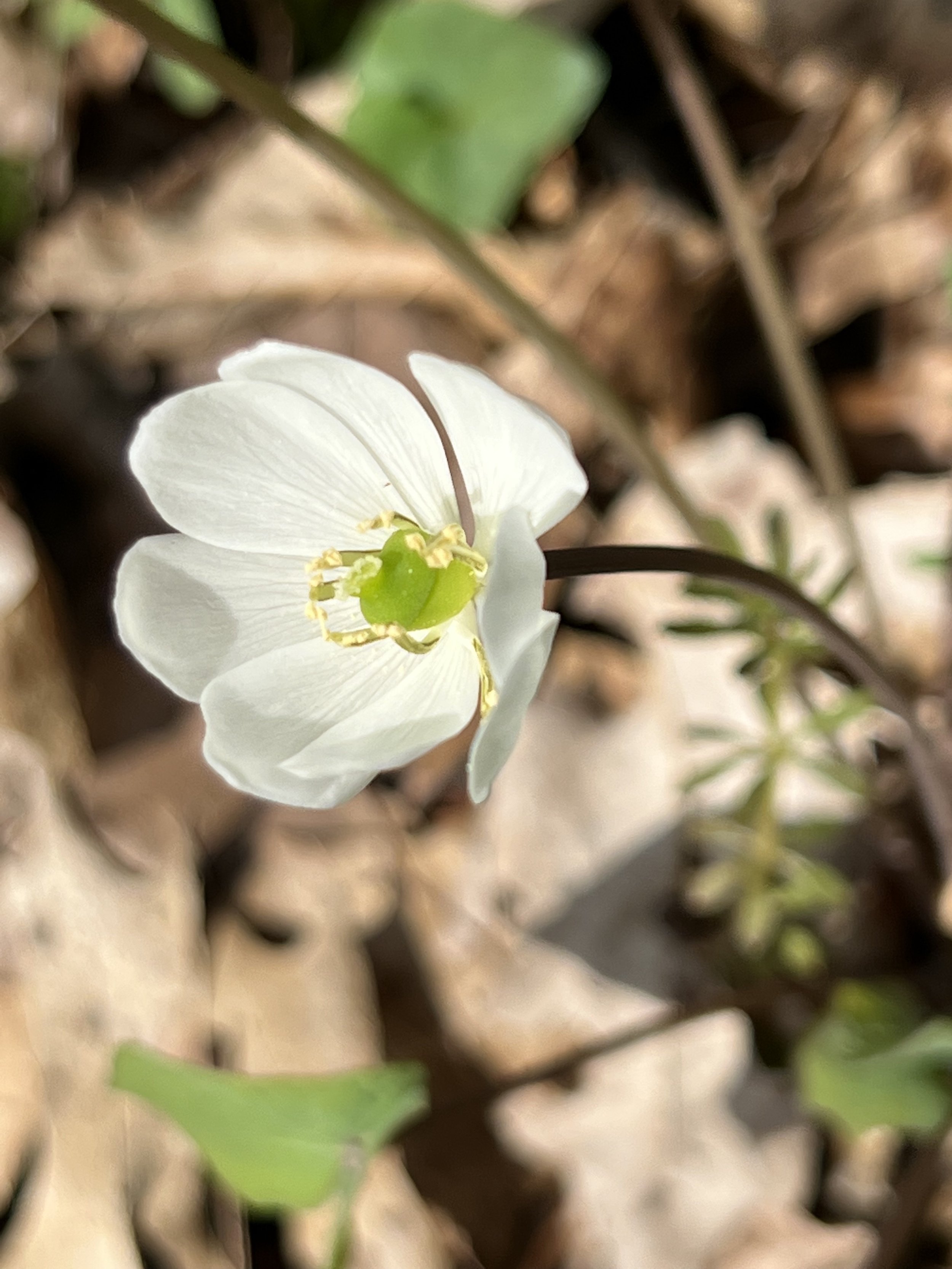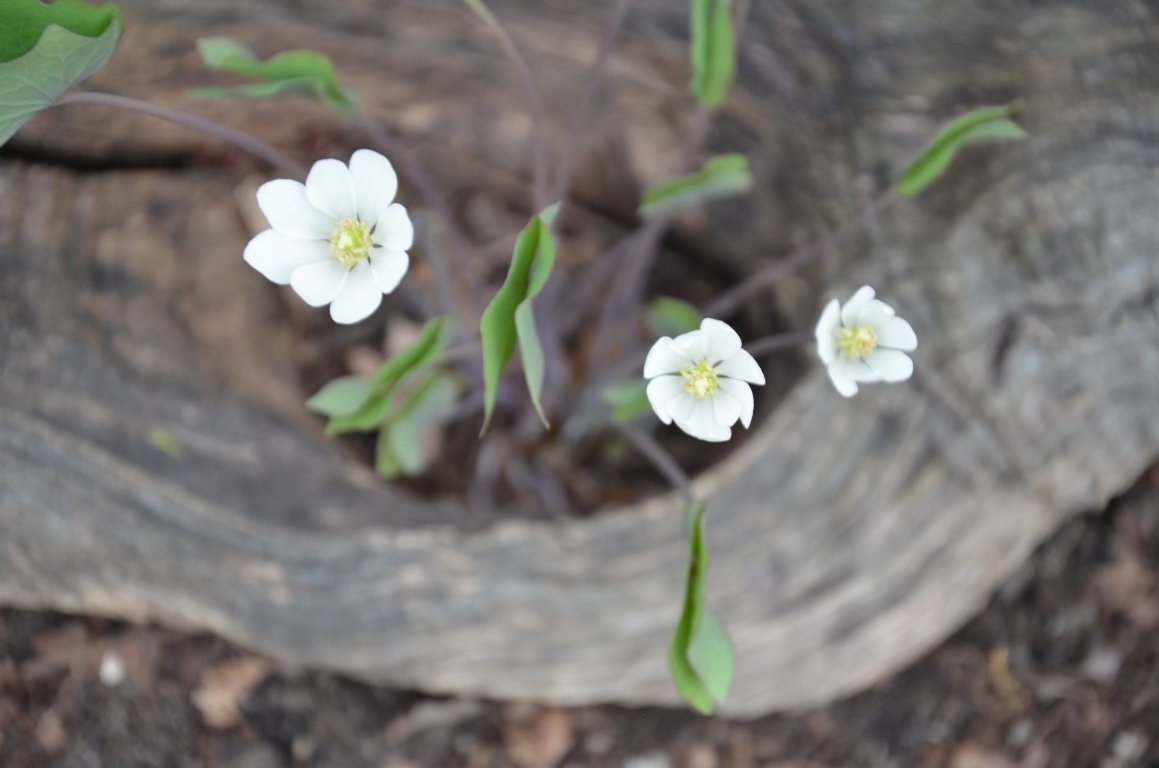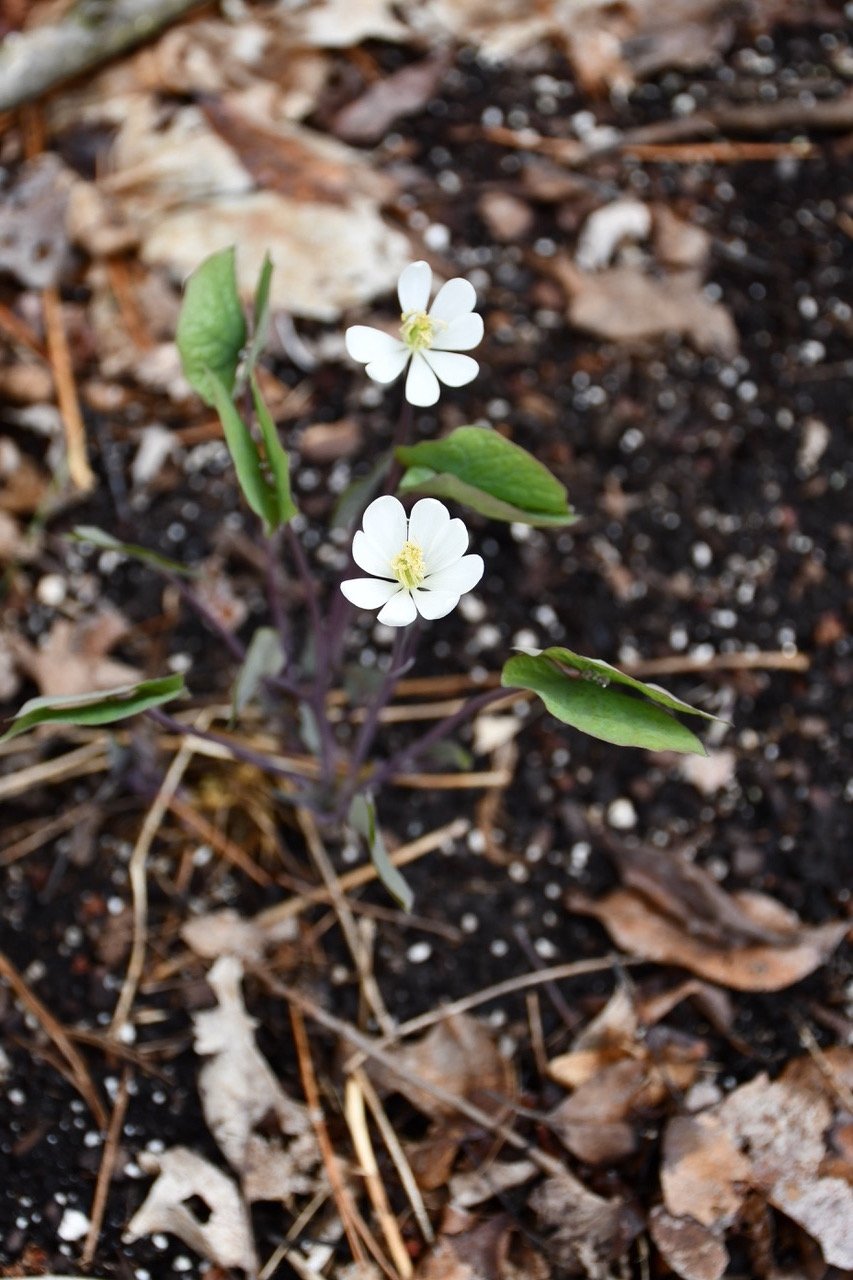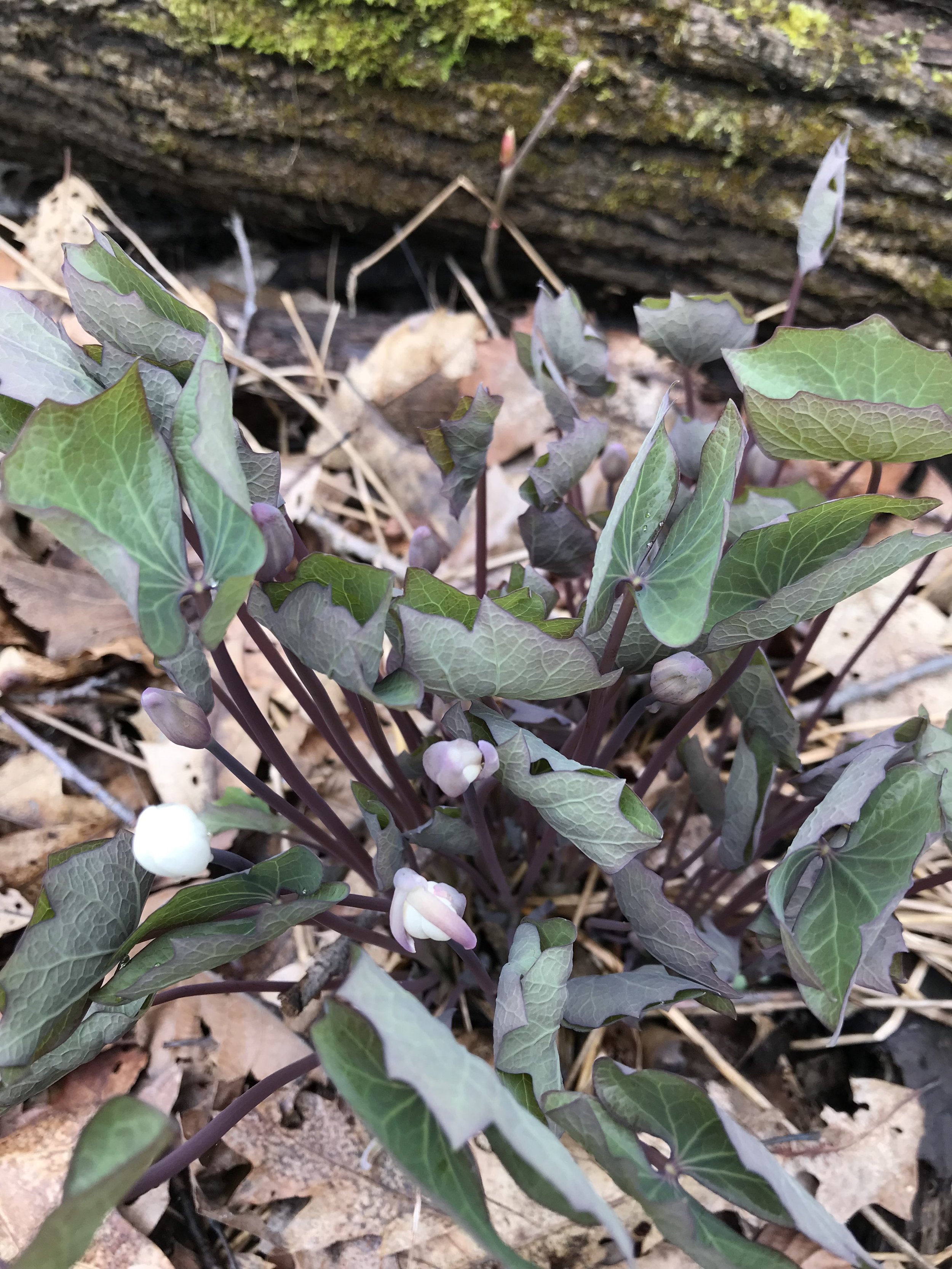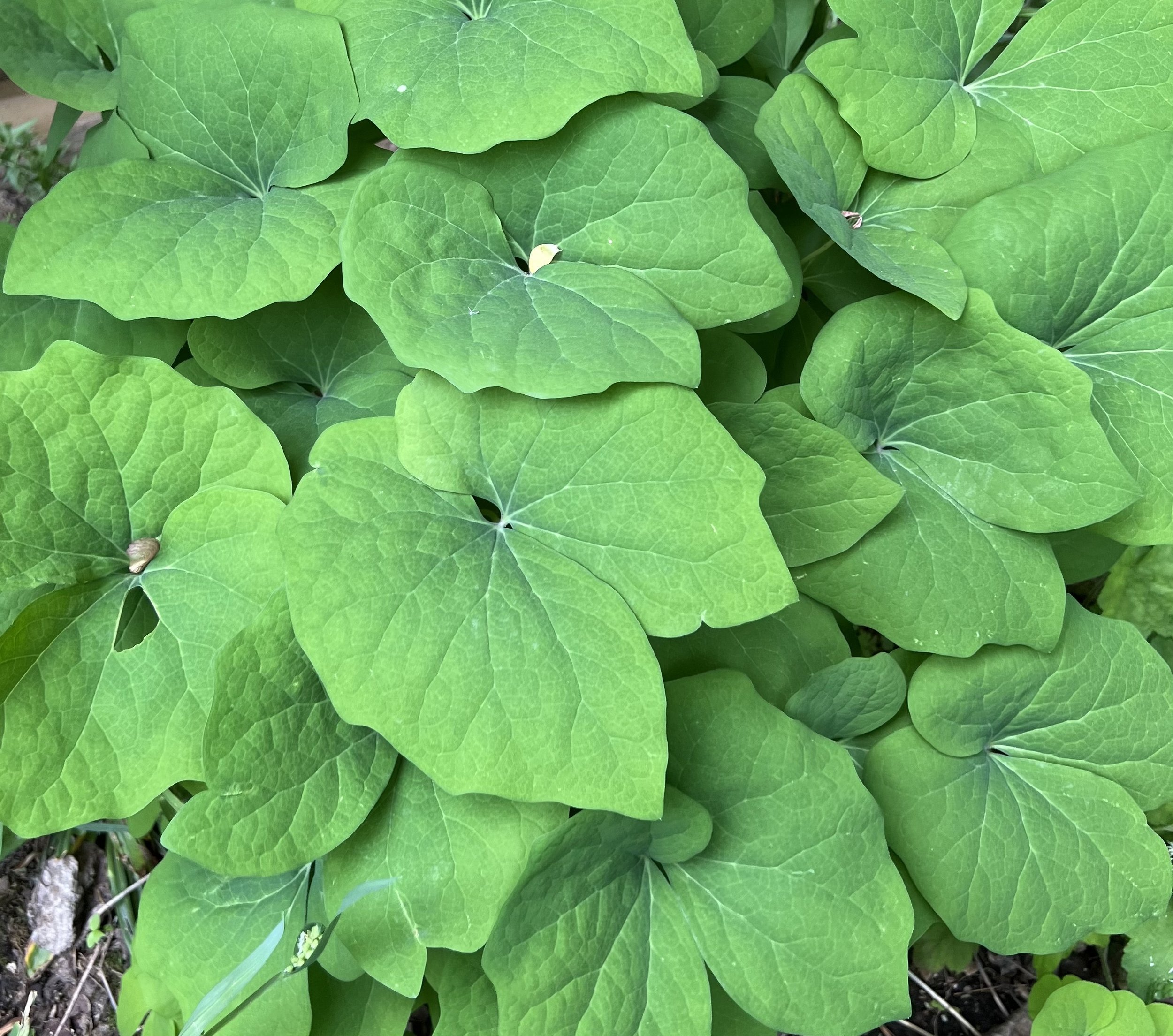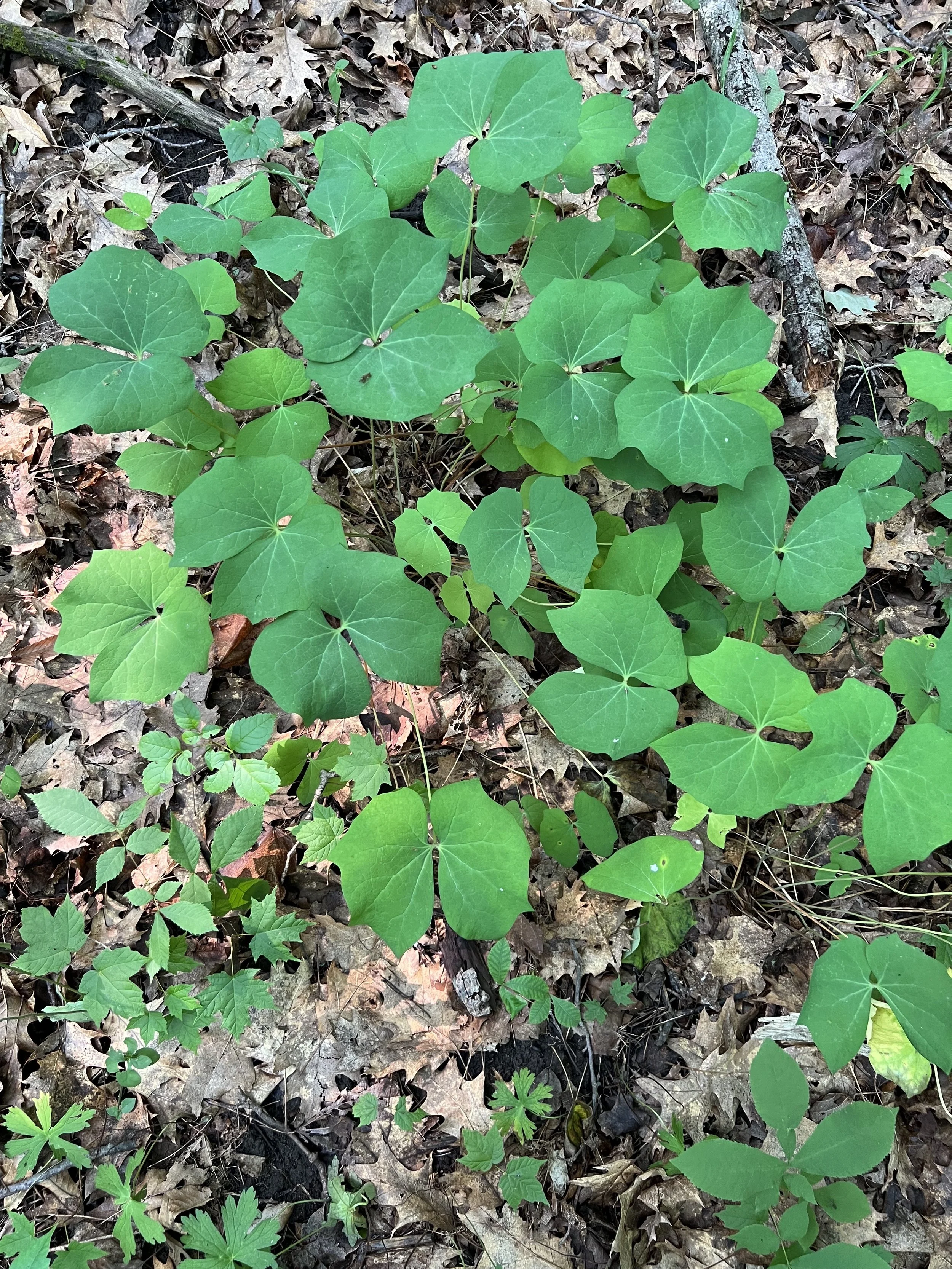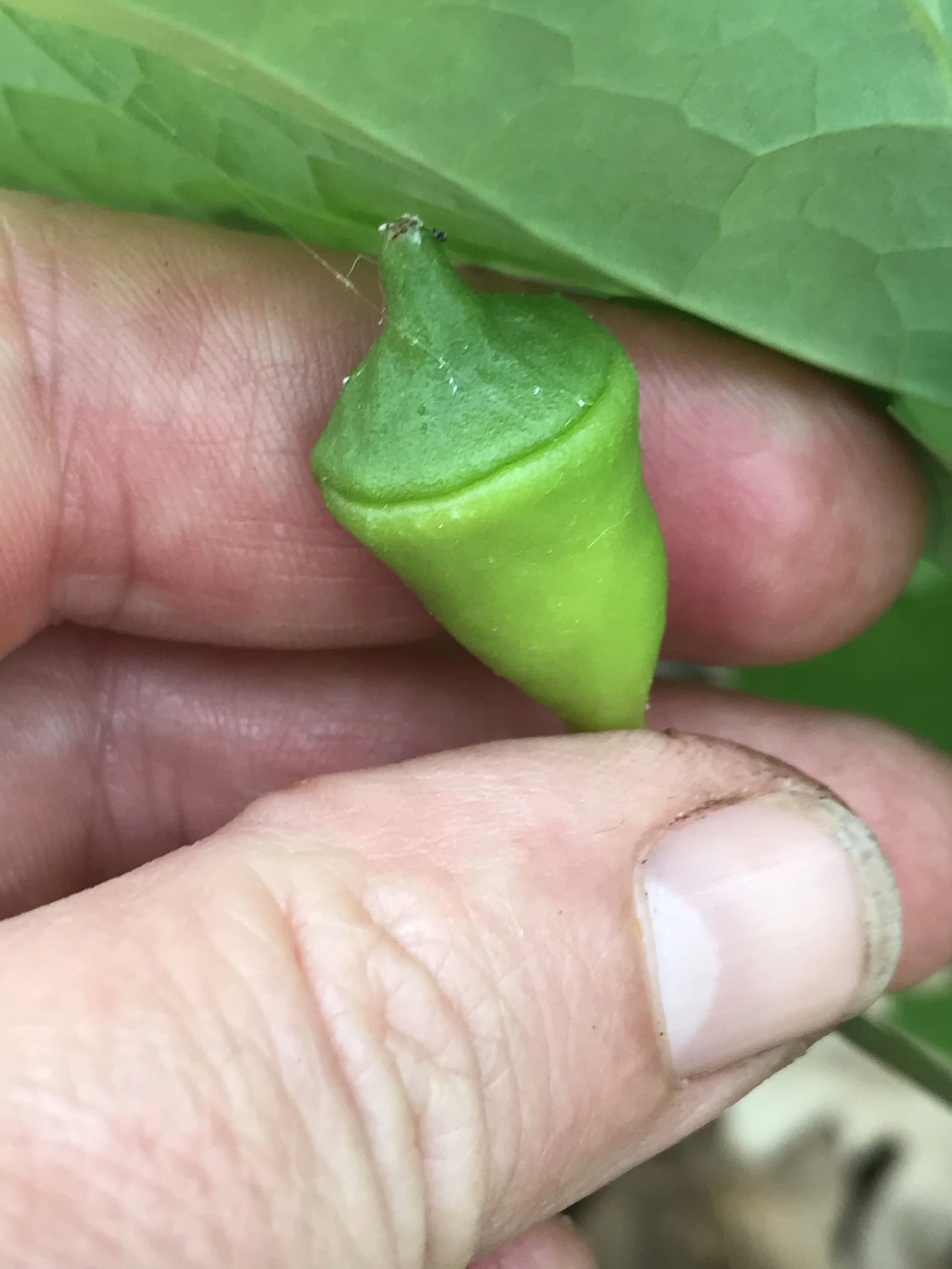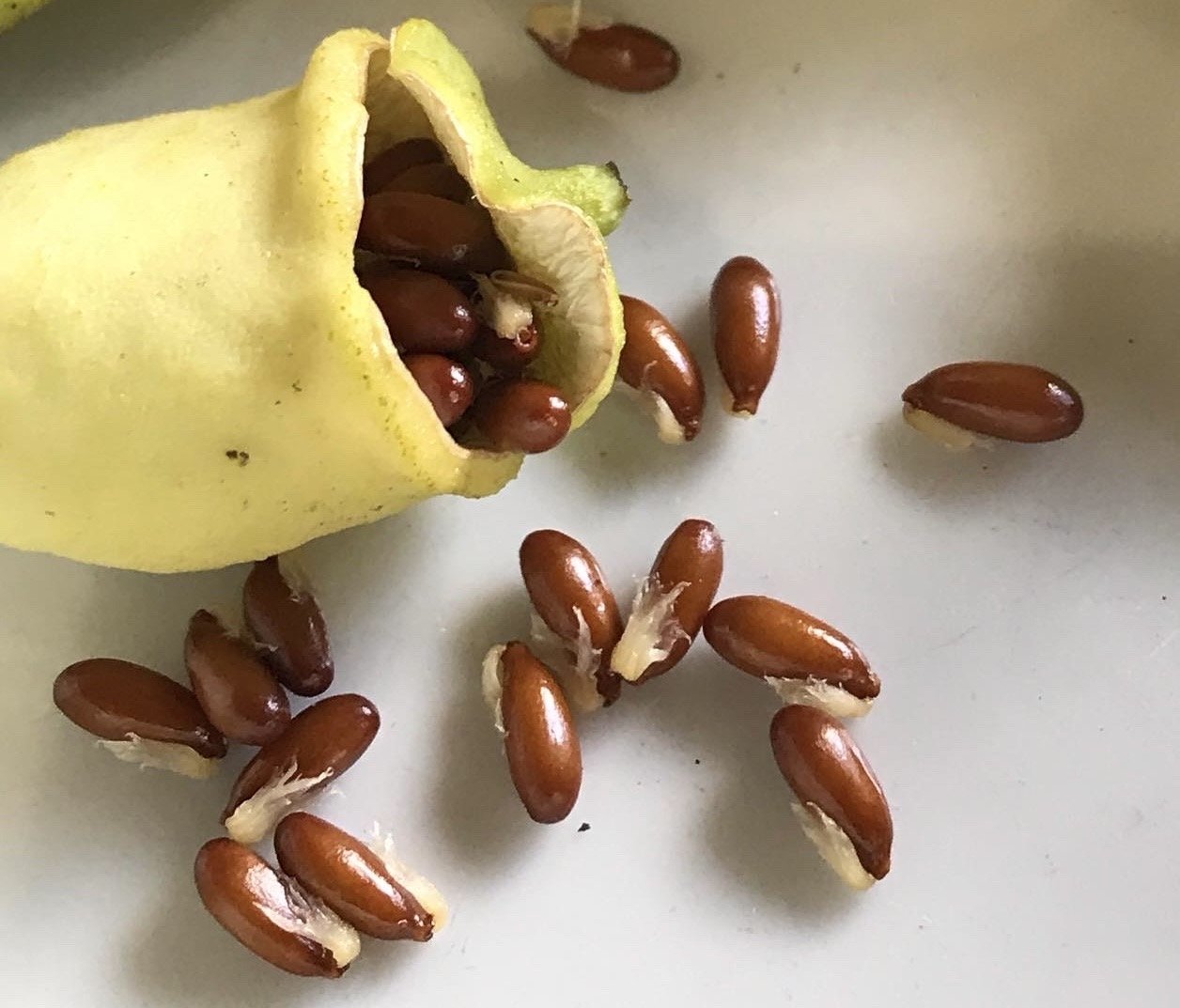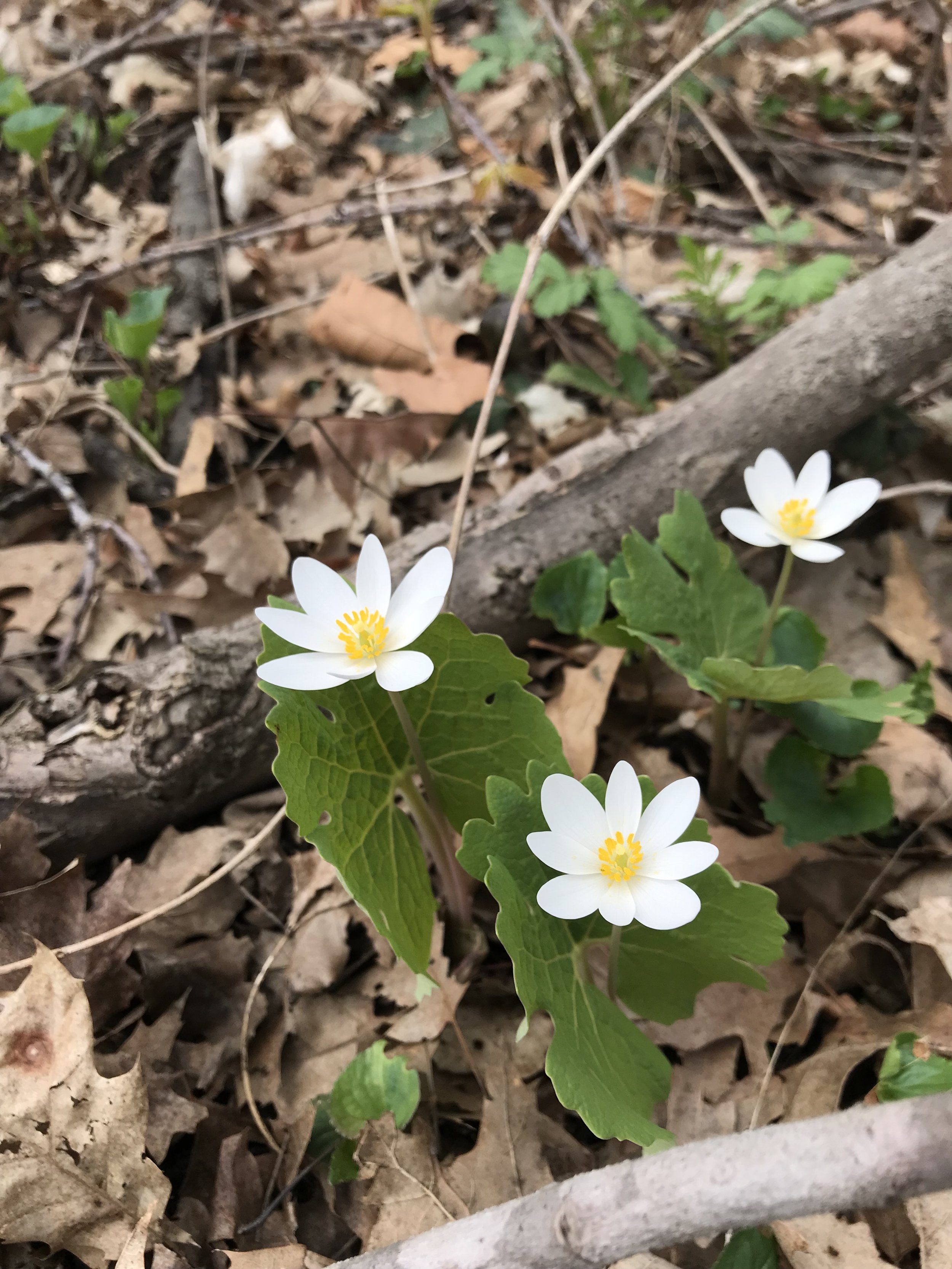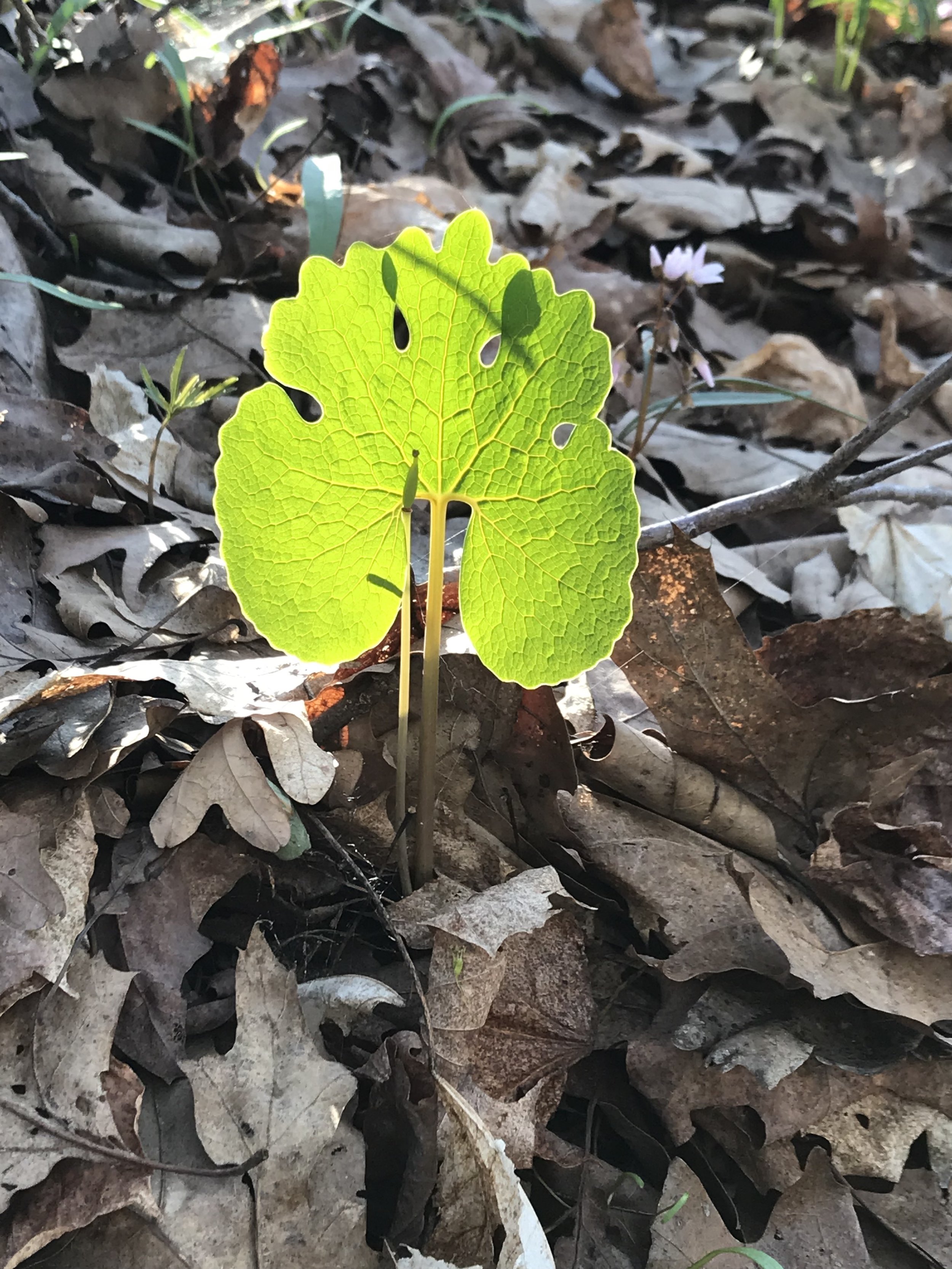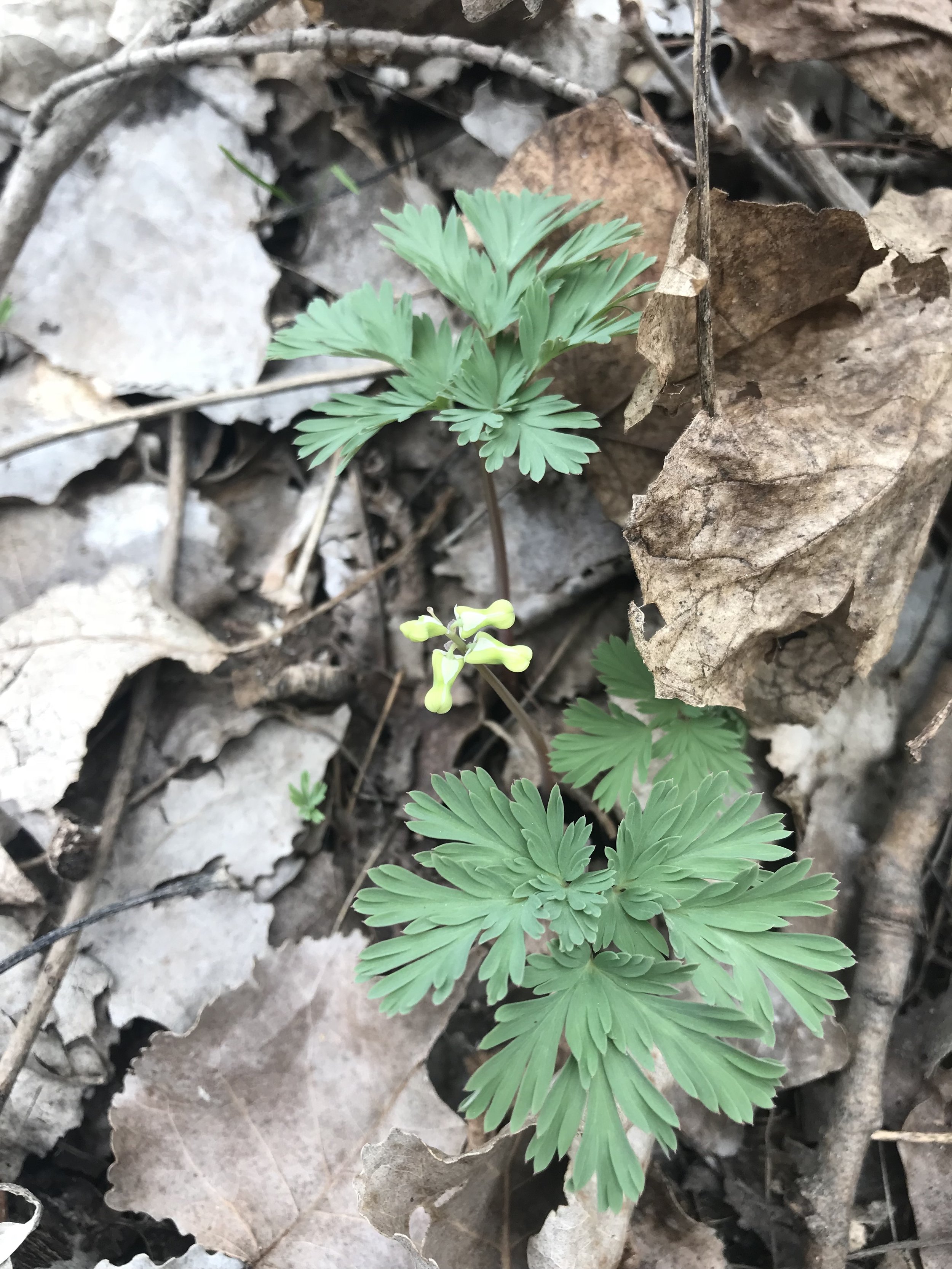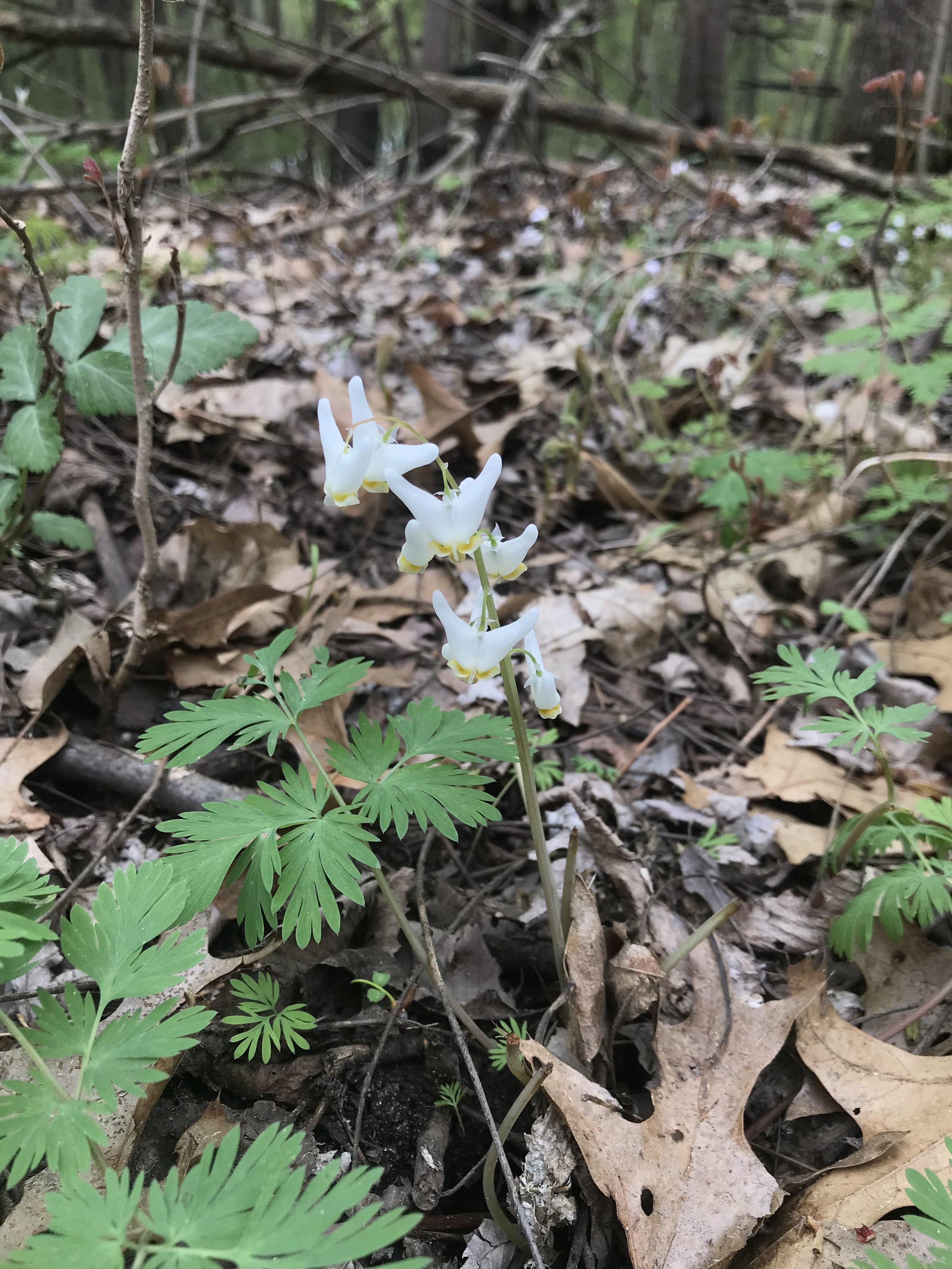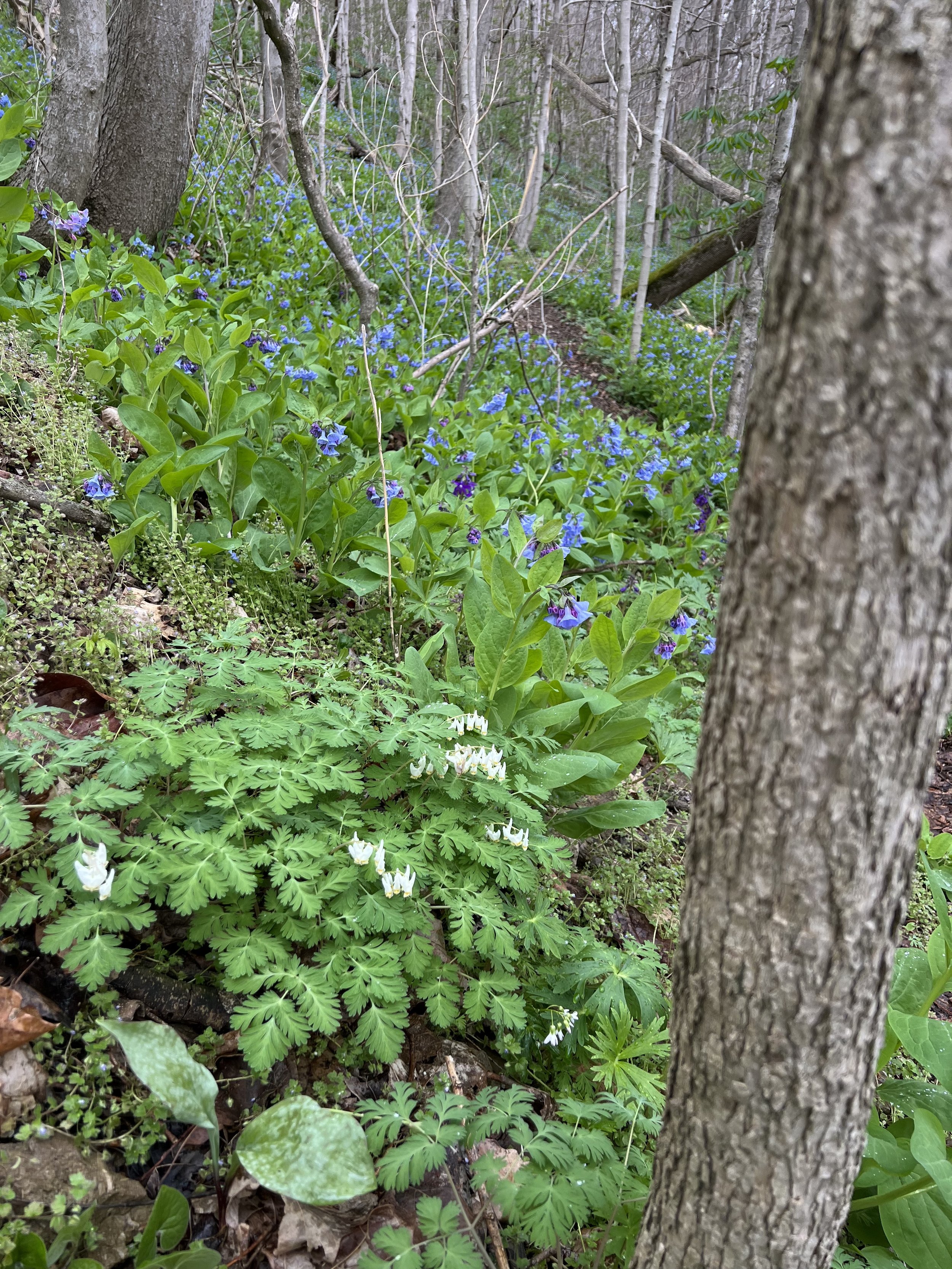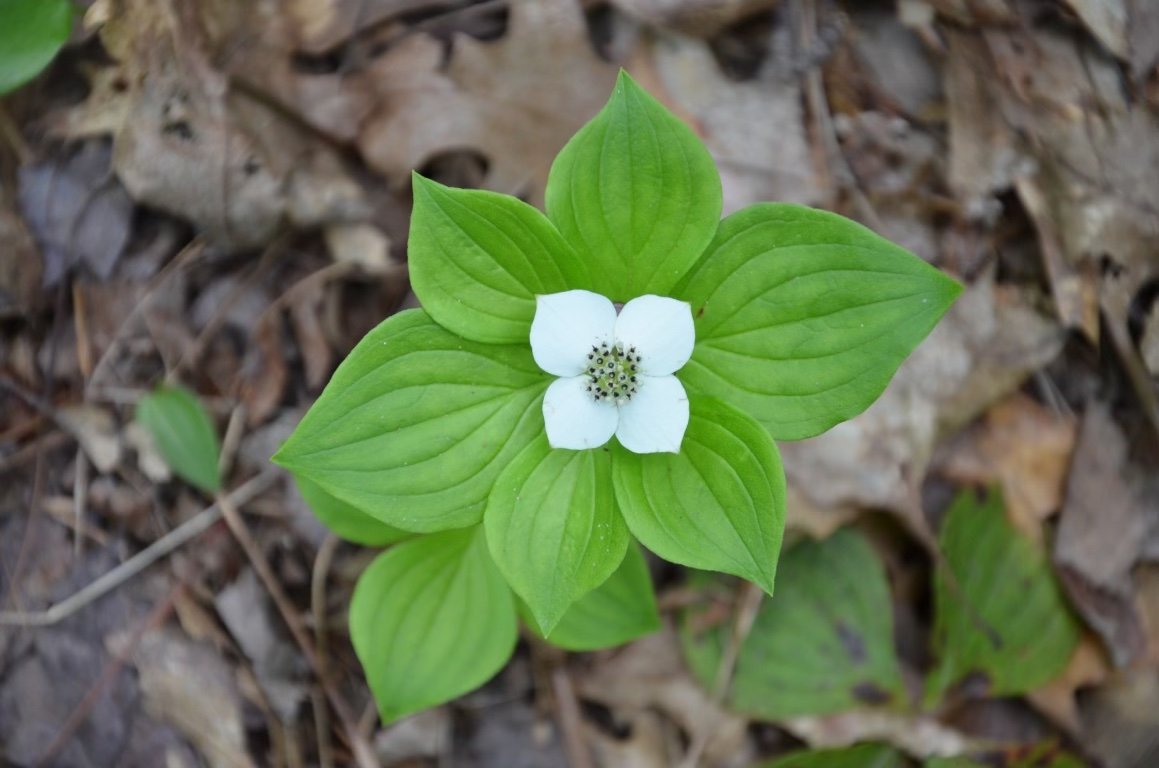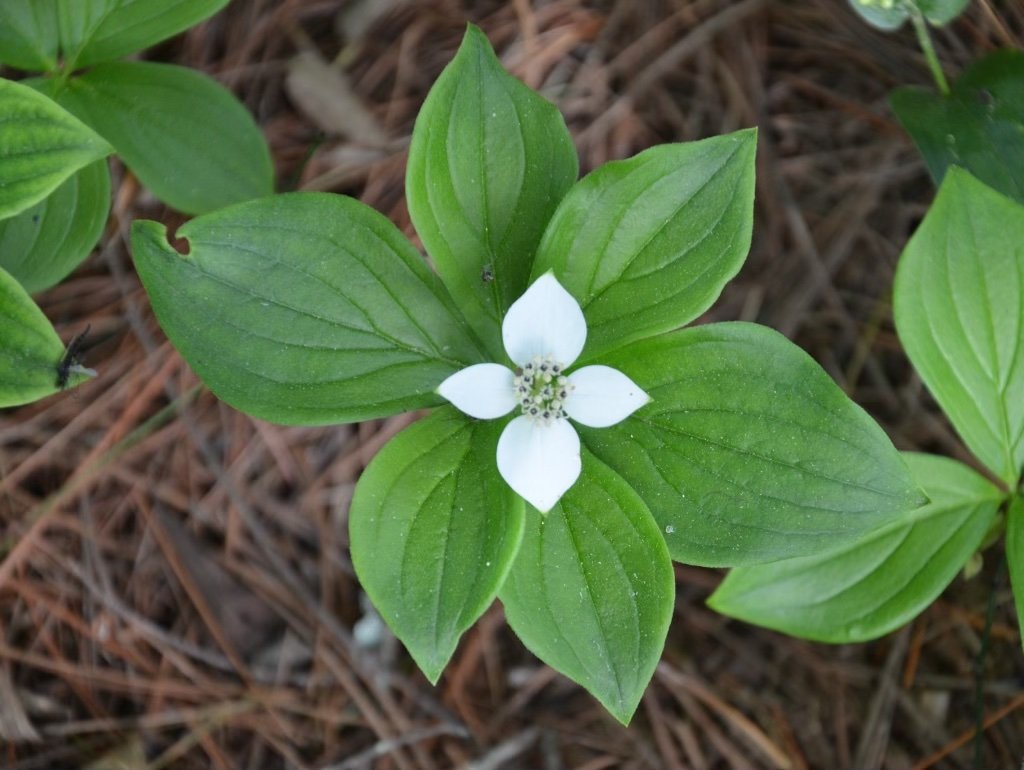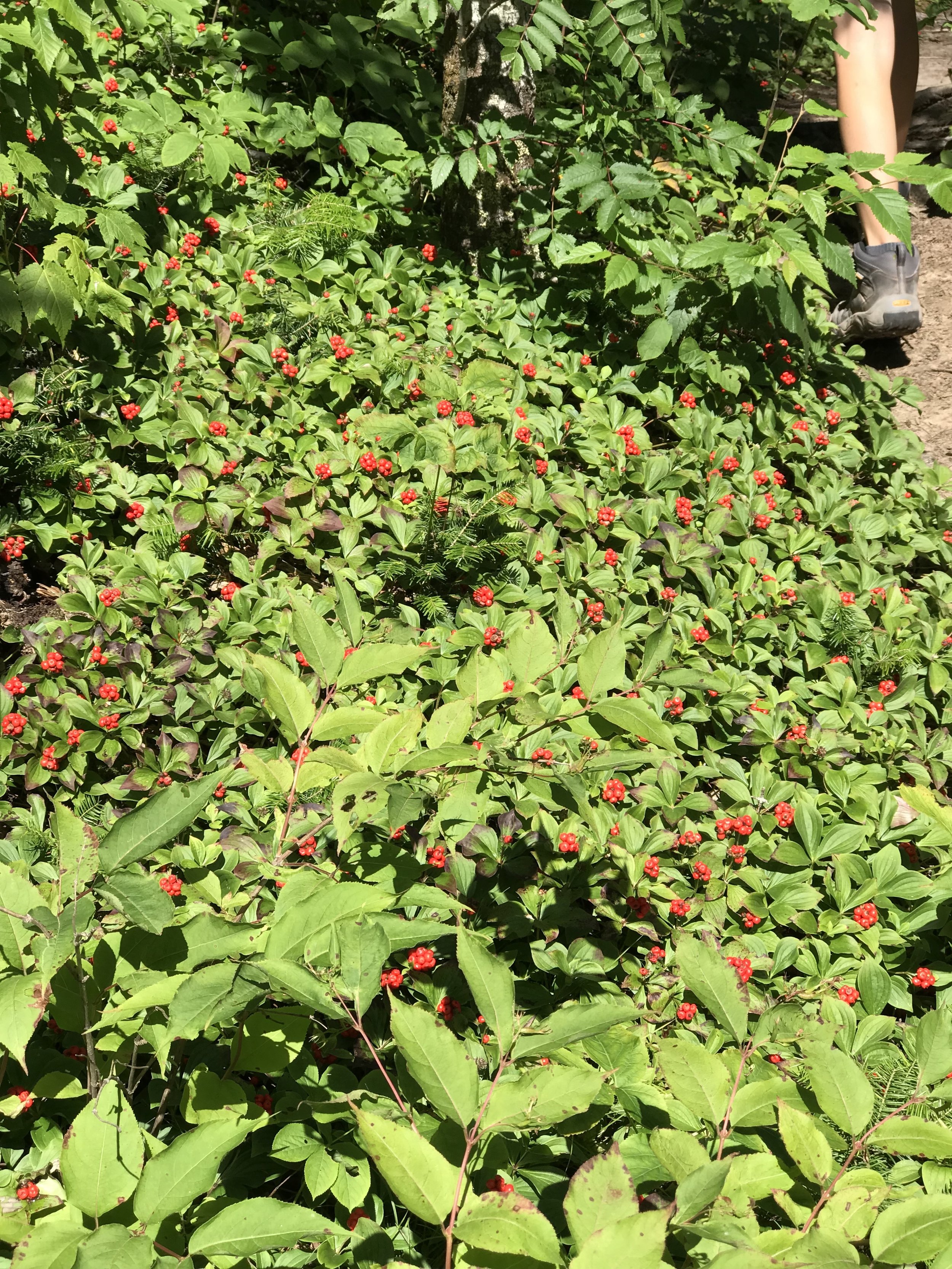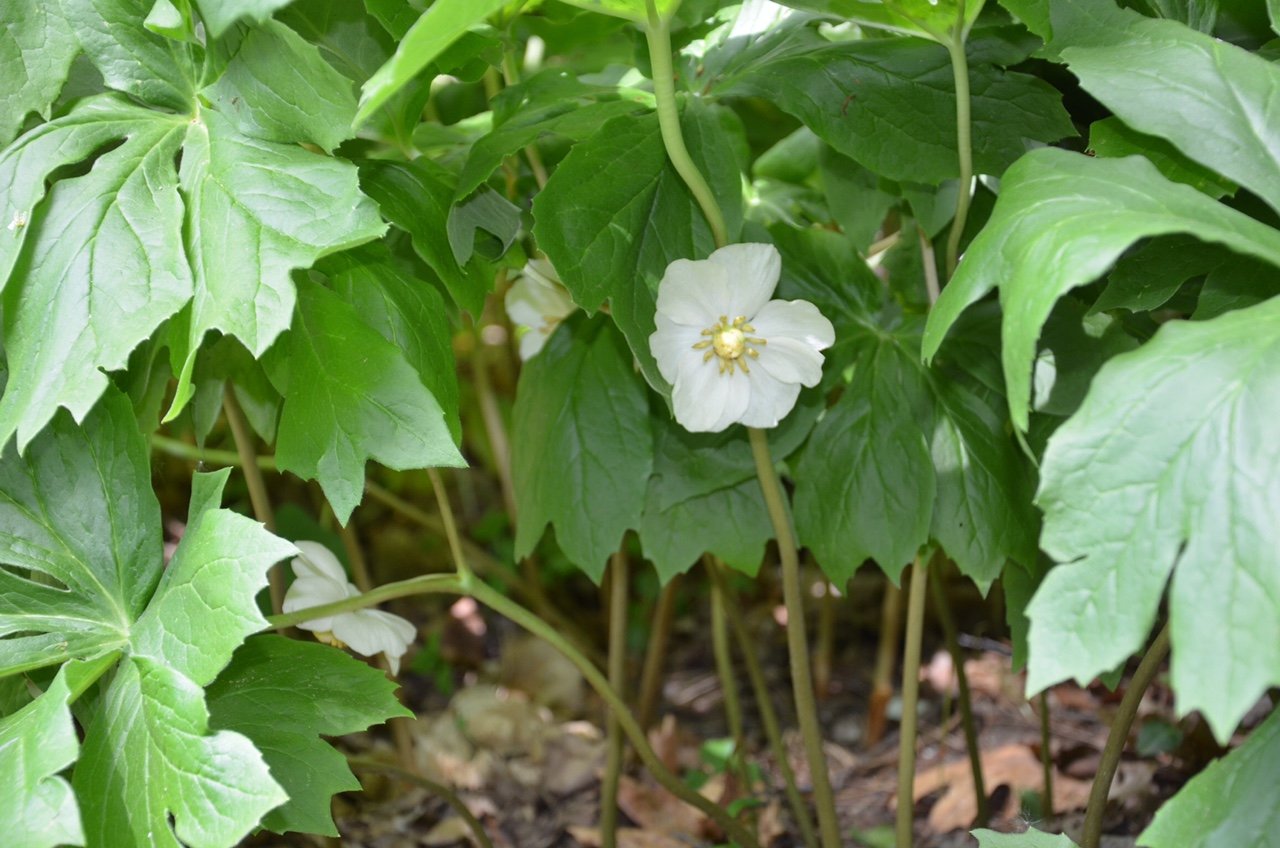 Image 1 of 8
Image 1 of 8

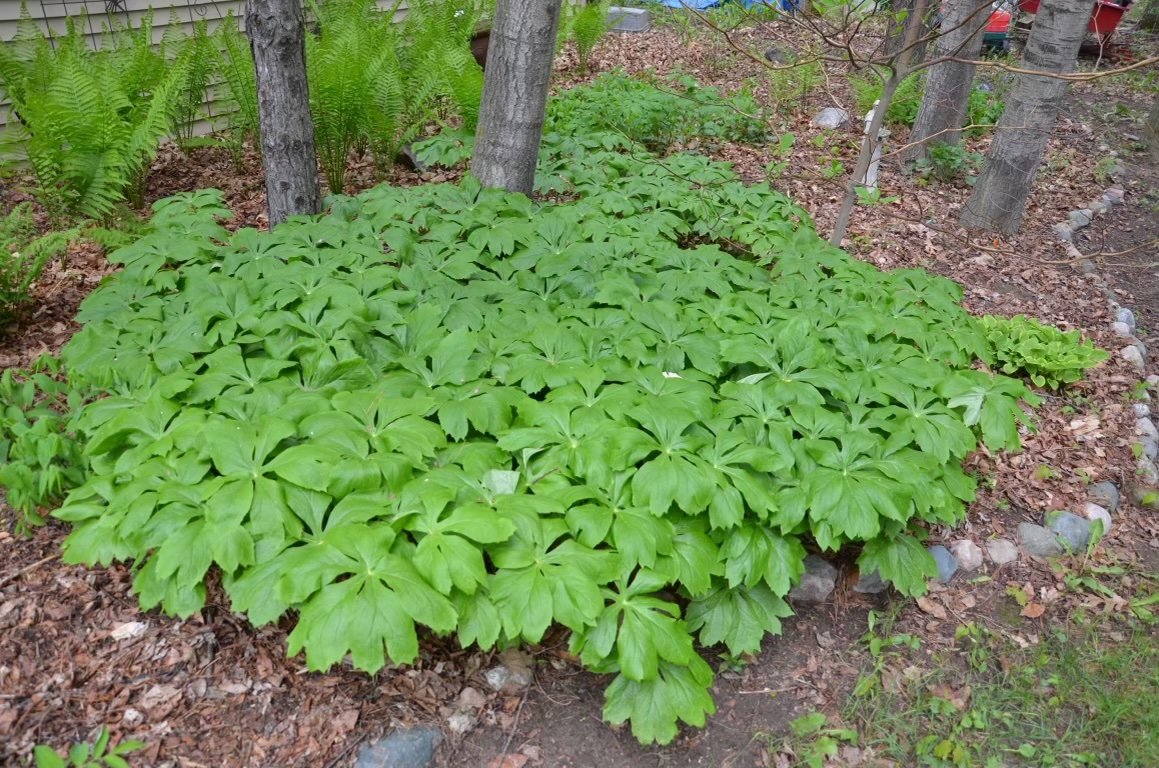 Image 2 of 8
Image 2 of 8

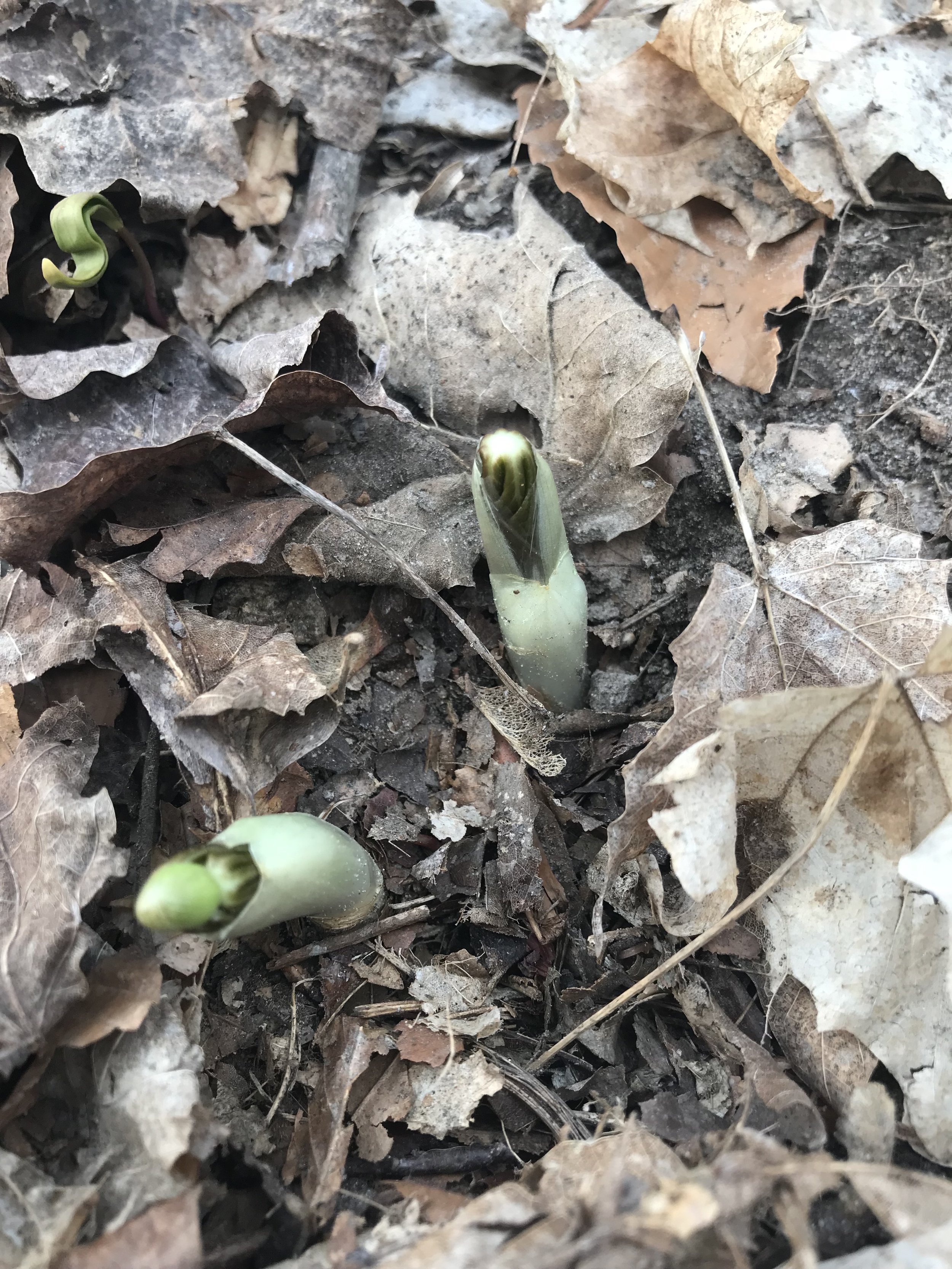 Image 3 of 8
Image 3 of 8

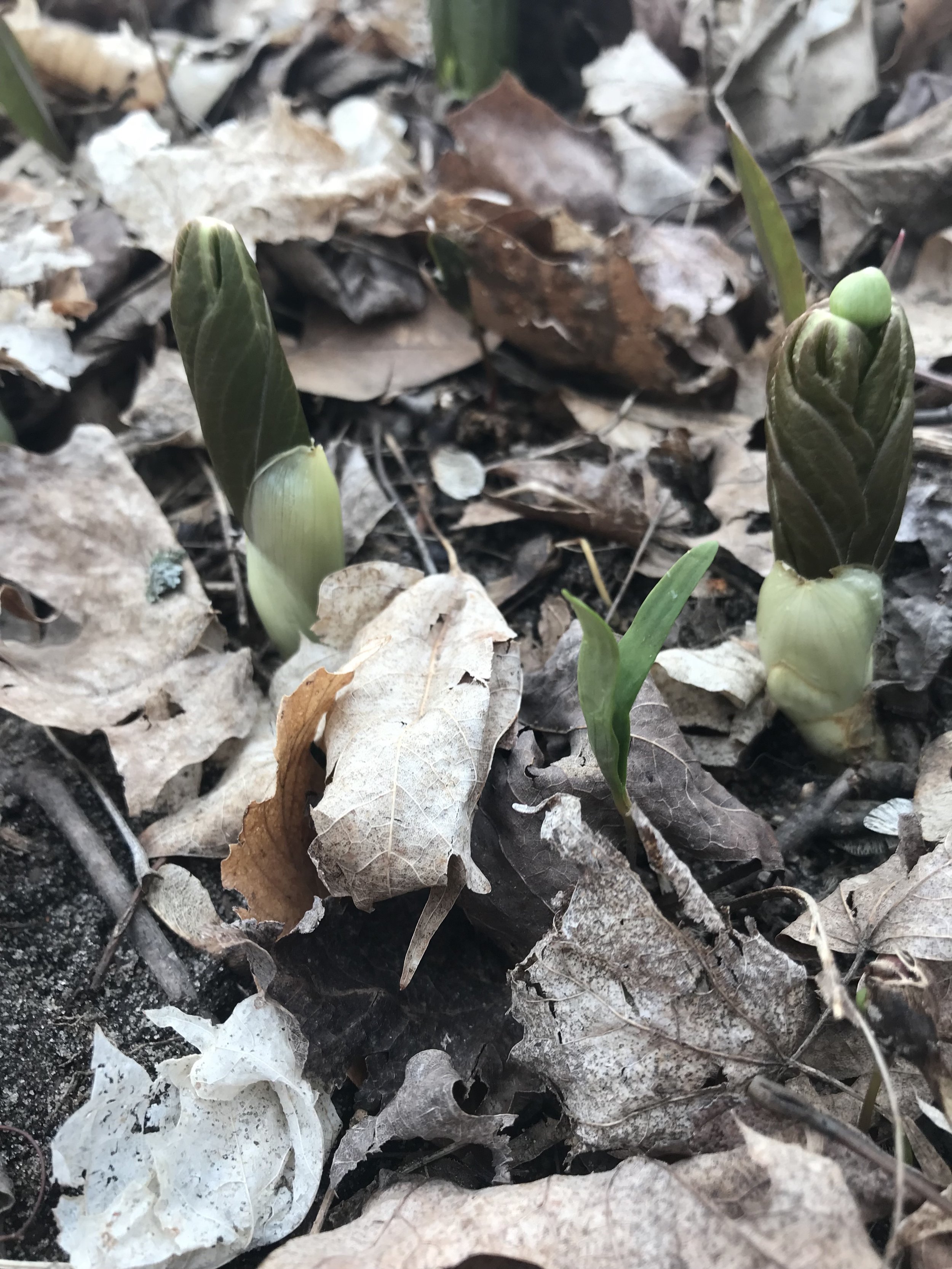 Image 4 of 8
Image 4 of 8

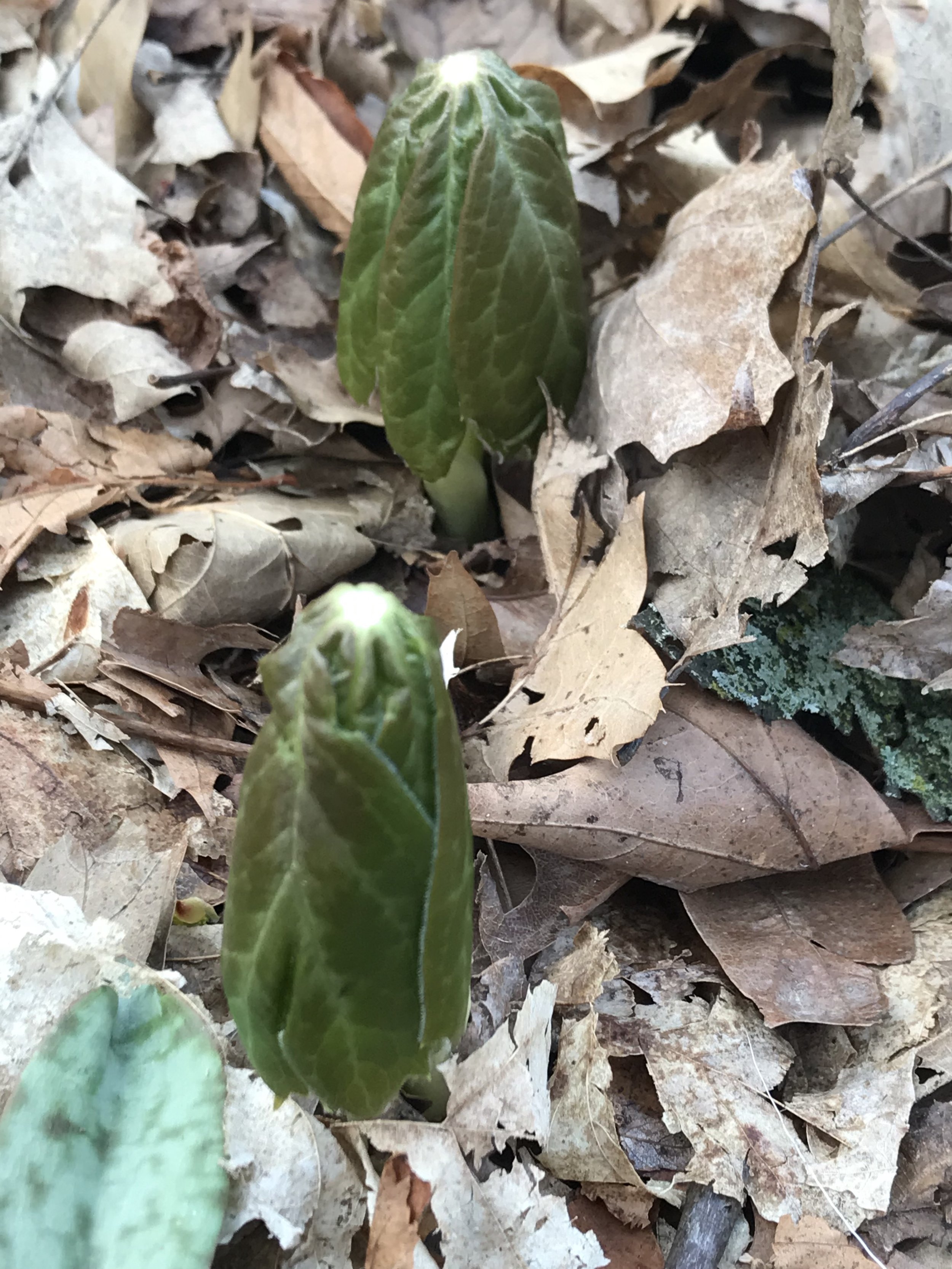 Image 5 of 8
Image 5 of 8

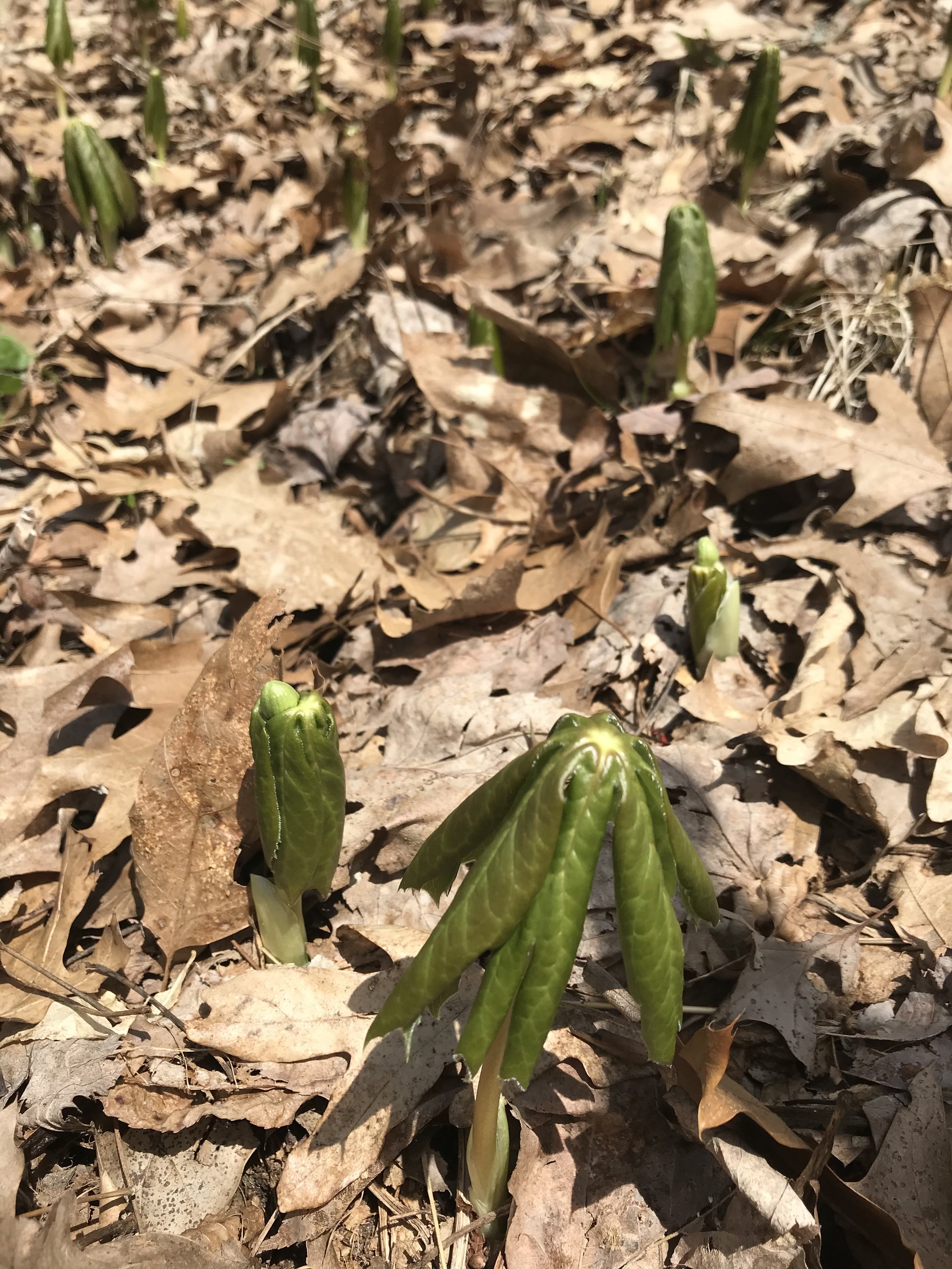 Image 6 of 8
Image 6 of 8

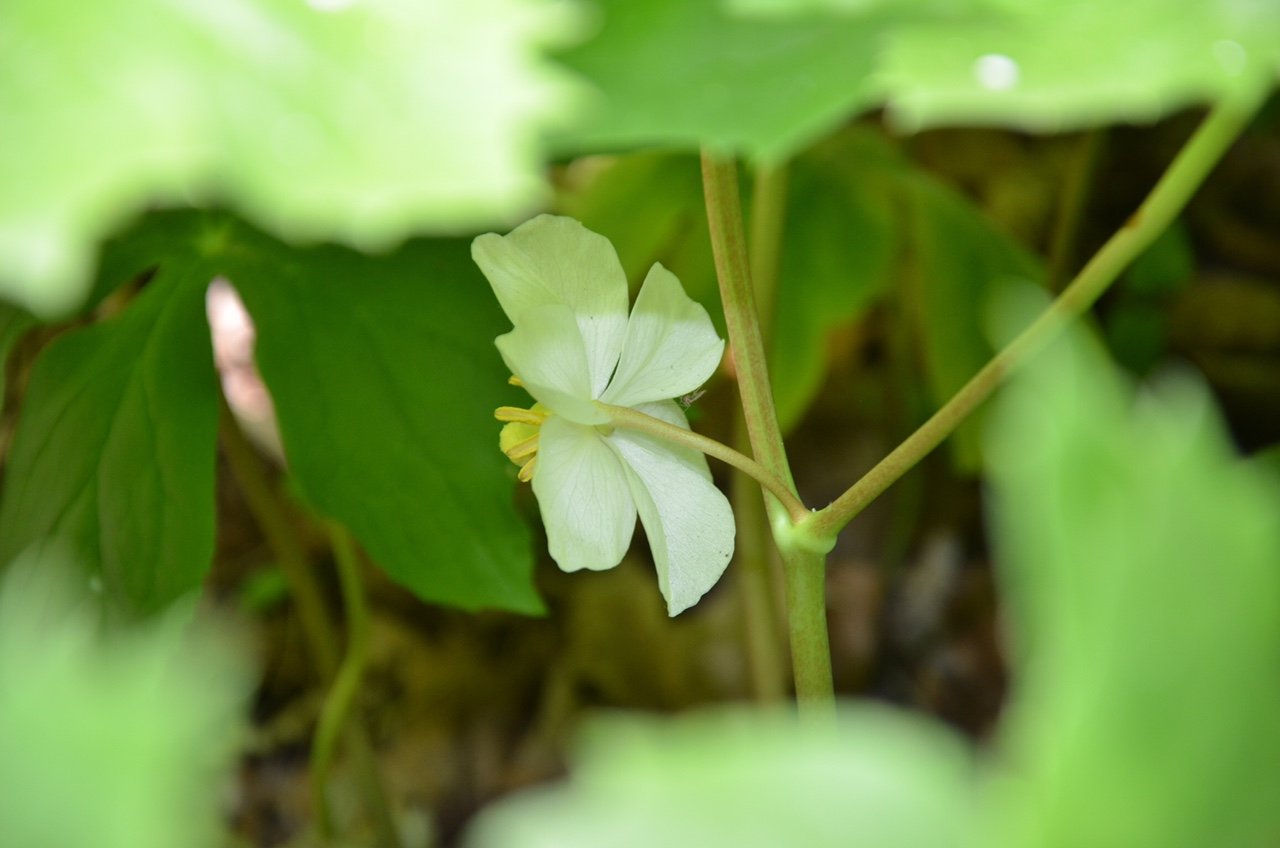 Image 7 of 8
Image 7 of 8

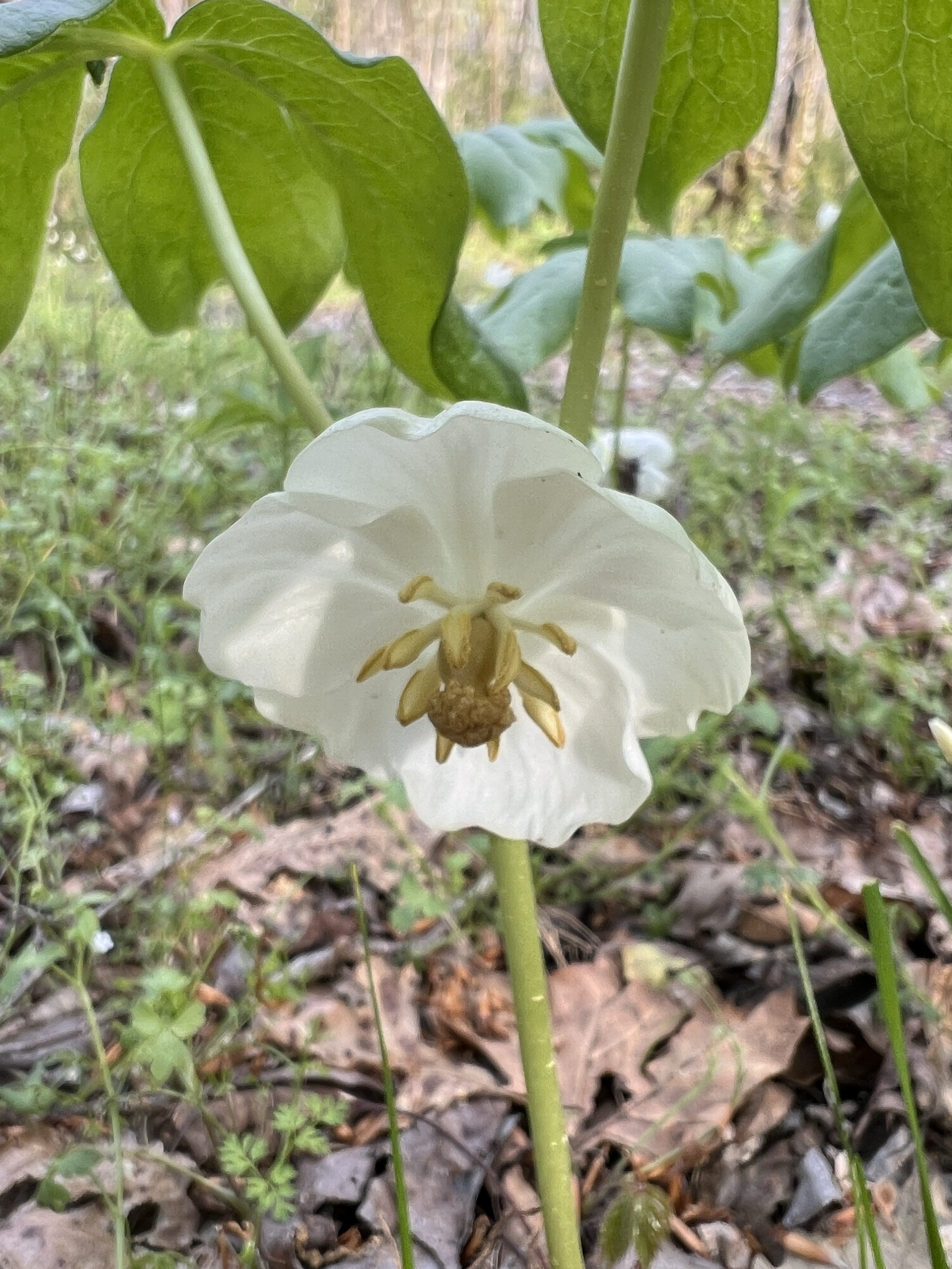 Image 8 of 8
Image 8 of 8









Mayapple (Podophyllum peltatum)
Mayapple leaves are large—up to 16 inches across—and lobed. The leaves are reminiscent of a beach umbrella, especially if observed from emergence to the complete unfurling of the leaves. Leaves emerge with a white sheath covering which opens and gives way to the folded green leaf.
Flowering plants have two of the large leaves and flowers form on the stalk underneath the umbrella, so they are not always visible if there is a thick patch of mayapple plants. The flowers themselves are also large—usually over 2 inches across. They have a large ovary and stigma in the center surrounded by pale yellow stamens.
Once pollinated, a fruit begins to form. It starts out green and eventually turns yellow and has a sweet smell. This fruit is the “apple” of mayapple, and it is popular with woodland mammals. They are also a favorite of box turtles! There are several seeds in each fruit that are dispersed by these woodland animals.
The vegetation then yellows and wilts down as the summer wanes, so even though it looks like a ground cover in the spring, during the summer and into fall, it is no longer standing.
Mayapple spreads vegetatively and can form large colonies. Mammals also have a role in spreading the plant around in the forest.
Mayapple (Podophyllum peltatum)
Michigan Flora reference page for state distribution: Mayapple
height: 12-15 inches
bloom time: May-June
soil: medium, rich
sun: partial, shade
plant spacing: 15”
flower: white (fruit: green to yellow)
life cycle: perennial
family: Berberidaceae
Mayapple leaves are large—up to 16 inches across—and lobed. The leaves are reminiscent of a beach umbrella, especially if observed from emergence to the complete unfurling of the leaves. Leaves emerge with a white sheath covering which opens and gives way to the folded green leaf.
Flowering plants have two of the large leaves and flowers form on the stalk underneath the umbrella, so they are not always visible if there is a thick patch of mayapple plants. The flowers themselves are also large—usually over 2 inches across. They have a large ovary and stigma in the center surrounded by pale yellow stamens.
Once pollinated, a fruit begins to form. It starts out green and eventually turns yellow and has a sweet smell. This fruit is the “apple” of mayapple, and it is popular with woodland mammals. They are also a favorite of box turtles! There are several seeds in each fruit that are dispersed by these woodland animals.
The vegetation then yellows and wilts down as the summer wanes, so even though it looks like a ground cover in the spring, during the summer and into fall, it is no longer standing.
Mayapple spreads vegetatively and can form large colonies. Mammals also have a role in spreading the plant around in the forest.
Mayapple (Podophyllum peltatum)
Michigan Flora reference page for state distribution: Mayapple
height: 12-15 inches
bloom time: May-June
soil: medium, rich
sun: partial, shade
plant spacing: 15”
flower: white (fruit: green to yellow)
life cycle: perennial
family: Berberidaceae
Mayapple leaves are large—up to 16 inches across—and lobed. The leaves are reminiscent of a beach umbrella, especially if observed from emergence to the complete unfurling of the leaves. Leaves emerge with a white sheath covering which opens and gives way to the folded green leaf.
Flowering plants have two of the large leaves and flowers form on the stalk underneath the umbrella, so they are not always visible if there is a thick patch of mayapple plants. The flowers themselves are also large—usually over 2 inches across. They have a large ovary and stigma in the center surrounded by pale yellow stamens.
Once pollinated, a fruit begins to form. It starts out green and eventually turns yellow and has a sweet smell. This fruit is the “apple” of mayapple, and it is popular with woodland mammals. They are also a favorite of box turtles! There are several seeds in each fruit that are dispersed by these woodland animals.
The vegetation then yellows and wilts down as the summer wanes, so even though it looks like a ground cover in the spring, during the summer and into fall, it is no longer standing.
Mayapple spreads vegetatively and can form large colonies. Mammals also have a role in spreading the plant around in the forest.
Mayapple (Podophyllum peltatum)
Michigan Flora reference page for state distribution: Mayapple
height: 12-15 inches
bloom time: May-June
soil: medium, rich
sun: partial, shade
plant spacing: 15”
flower: white (fruit: green to yellow)
life cycle: perennial
family: Berberidaceae
